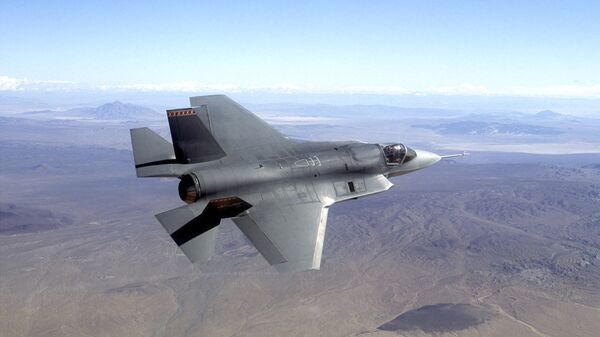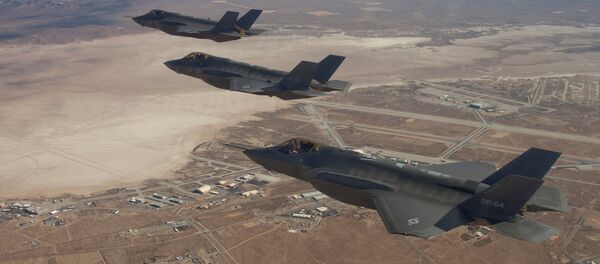The new sensor will monitor every particle flowing into pilot’s oxygen masks and every particle they exhale in hopes that the composition of the air breathed by pilots can reveal the root cause of the oxygenation problems, Defense News reported Monday.
A flurry of hypoxia episodes reported between May and June of this year caused the F-35A groundings at Luke AFB.
After the sensors are worn by pilots, the UK-based Cobham PLC will analyze the data and hopefully get to the bottom of what’s going on, president of mission systems Julian Hellebrand said at the Paris Air Show over the weekend.
The US Navy might look into adding Cobham’s services and products following oxygen poisoning in multiple types of aircraft, including F/A-18 Super Hornets, T-45 trainer jets, and F-22s.
“The delivery of this inhalation sensor block marks the first step towards creating this mosaic by capturing temperature data and pressure data inside the cabin, and the flow rate and concentration of oxygen being supplied to the pilot with each inhalation breath,” the company said in an announcement.
If further F-35 hypoxia incidents occur, the onus may very well be on Cobham based on its ambitious product description. “Cobham is developing a solution to protect the pilot from potential physiological events by working to integrate gas sensing technology into its life support equipment that will predict and prevent these events,” the company announced June 19.
Last week, Sputnik reported on top military brass testifying before Congress apparently befuddled by what was going on in so many military aircraft. “We have torn some of them apart to the extent that took every component, every single component in that gas path, that breathing gas path, out of the airplane starting with the engine and moving through the entire system. Inspecting all the piping in between all the way up to the mask that the aircrews wear,” Vice Adm. Paul Grosklags said last Wednesday.
“To date, we have found no smoking guns” for what’s causing oxygen poisoning, he said, adding “we still have not been able to find what we would consider to be a proximate cause.”
“We have some areas which we think may be, combined together, could cause physiological incidence,” a top Luke AFB told AZ Central in an article published June 16. He hedged expectations though, noting, “we’re not sure” what the fundamental cause of the issue is.




